#eastern region (iceland)
Explore tagged Tumblr posts
Text
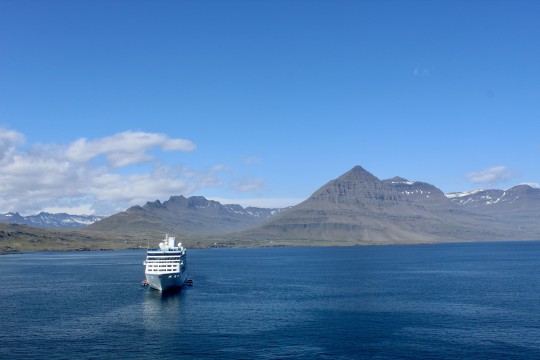



Iceland - Djúpivogur (2) (3) (4) by Mike Fitzpatrick
Via Flickr:
(2) The view northeast from the top of Bóndavarða along the Atlantic Ocean and Icelandic coast. (3) Drying fish.
10 notes
·
View notes
Video
Weathering the Storm by Jos Buurmans Via Flickr: Driving in Iceland presents an ever-evolving adventure. The scenery transforms continually, matching the ongoing shifts in weather. During our journey along the East Iceland fjords, we encountered particularly adverse conditions, subjecting us to the unforgiving elements – gale force winds and unyielding rain were our constant companions. Worst of all (at least for a photographer), we gazed at a perpetually overcast sky, draped in a monotonous, oppressive gray. However, as they often say, the weather in Iceland is among the most fickle aspects of this land. In a fleeting, magical instant, the sky defied its gloom and breathed life into the rugged terrain, casting a radiant light upon the mountain. Only moments later, the sky once again veiled itself, and we pressed on towards the next clearing on our journey.
#Atmospheric Nature#Austurland#Clouds#Daylight#Eastern Region#Europe#Iceland#Landscape Photography#Mountain#Mountain Landscape#Mountain Peak#Mountains and Peaks Photography#Nature#Northern Europe#Peak#Reyðarfjörður#River#Sky#Storm#Stream#Tiered Waterfall#Water#Waterfall#Fjarðabyggð#flickr
4 notes
·
View notes
Text
Studlagil canyon, Iceland: Nestled in the remote landscapes of East Iceland lies Studlagil Canyon, a breathtaking marvel known for its distinctive basalt columns and vibrant turquoise waters. Studlagil Canyon, or Stuðlagil Canyon in Icelandic, meaning 'Basalt Column Gorge... Stuðlagil is a ravine in Jökuldalur in the municipality of Múlaþing, in the Eastern Region of Iceland. The river Jökla runs through the ravine. . It is known for its columnar basalt rock formations and the blue-green water that runs through it. It became an unexpected tourist sensation. Wikipedia
#Stuðlagil Canyon#Studlagil canyon#Basalt Column Gorge#Grund#Jökuldalsvegur#Egilsstadir#East Region#iceland#europe
294 notes
·
View notes
Photo

The pronoun "I" in traditional Scandinavian dialects
by jkvatterholm
I've aimed for this map to show the traditional area around 1900. It is similar in many ways still today, but some areas have shrunk a lot. Many Danes do no longer speak the genuine dialects for example, instead speaking standard Danish (incl. "jeg") with a local accent. This was starting already then of course, but on a much smaller scale. For example, Læsø, Djursland and Århus had already begun to move away from a at the time.
The spelling in the info should be close enough that IPA is not needed.
I've used tons of sources from this, including maps from regions or countries, trying to stitch them together and fill in any holes and correct discrepancies.
I can not separate forms with and without the final consonant (ja/jag) because that's impossible. Almost half the dialects may use both, depending on if the word is emphasised, on the end of a sentence or followed by a vowel etc.
Some spoken samples:
"ieg" in South-West Inland of Norway. (Press the speaker icon)
"i" area of Norway by Sweden.
Icelandic "ég" being pronounced "jeg".
Southern "i" area of Sweden.
Northern "i" area of Sweden.
The "je/ji" area besides it.
"je" on Swedish/Norwegian border.
Southern "æ" area of Denmark
Northern Jutland, Denmark
"e(g)" from Western Norway
"e" from Eastern Norway.
In standard languages:
Proto-Norse: ᛖᚲ (ek), ᛖᚲᚨ (eka)
Old Swedish: iak, iæk, iægh
Swedish: jag
Old Norse: ek, ec
Faroese: eg
Bokmål: jeg
Nynorsk: eg
Icelandic: ég
Old Danish: iak, iæk, iægh, æk, ak
Standard Danish: jeg
94 notes
·
View notes
Text
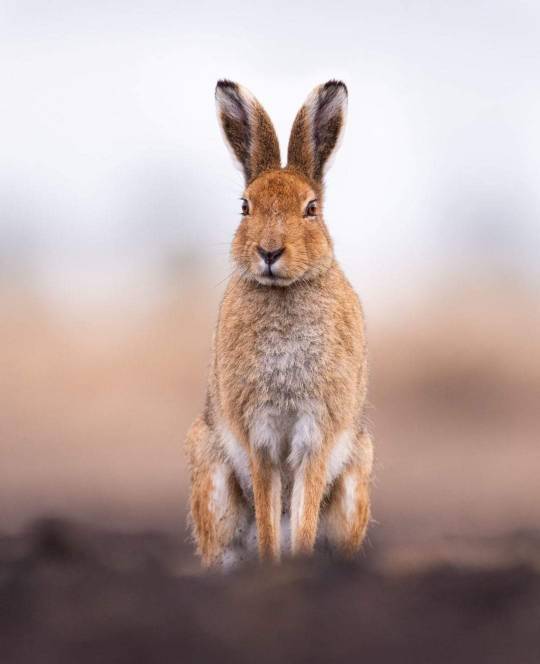
Mountain hare, also known as blue hare, tundra hare, variable hare, white hare, snow hare, alpine hare, and Irish hare, is a species of Palearctic hare that is largely adapted to polar and mountainous habitats.
This species is distributed from Fennoscandia to eastern Siberia; in addition, isolated mountain populations occur in the Alps, Scotland, the Baltics, northeastern Poland, and Hokkaidō. In Ireland, the Irish hare (L. t. hibernicus) lives on lowland pastures, coastal grasslands, and salt marshes, not just in the mountains. The mountain hare has also been introduced to Iceland, Shetland, Orkney, the Isle of Man, the Peak District, Svalbard, the Kerguelen Islands, the Crozet Islands, and the Faroe Islands. In the Alps, the mountain hare lives at elevations from 700 to 3,800 m (2,300 to 12,500 ft), depending on geographic region and season.
Instagram.com/karolwildlifephotography/
56 notes
·
View notes
Text
I feel like the fact that Ru'Aun is heavily Americas/Europe (specifically UK) coded and Gal'Ruk is supposed to be Icelandic/Nordic coded, it kinda leaves Tu'La, a region described as hot, having lush forests and worshipping a sun god to be African/Middle Eastern coded, and knowing that Tu'La is also described as a very war based region that unreasonably invade and declare war on Ru'Aun, it feels a little icky on CatFace's part.
Like, I hope it's not intended, but with the way they described Tu'La, the few shots we got to see, and the actions they take that we are out right shown, it's not great.
I have no intention of being the white guy standing on a box saying Jess is racist, she isn't, but I think societal racist stereotypes kinda snuck their way into the writing of Tu'La. Not to mention it's the region to the only visible dark skinned woman we ever really see in MCD (except for some background npcs, so I guess dark skinned character), who also was called 'The Fury', which in it's own right never sat well with me but that's for another day.
20 notes
·
View notes
Note
Im curious if FMC is a fae. Would she have wings like other fae depictions ???
Traditionally, faeries are depicted with a wide variety of features.
Appearances greatly vary depending on the region the beliefs have come from.
Keep in mind Irish, Scandinavian, Nordic and Celtic folklore may have common roots but they are all very different.
And in some instances the word 'Fae' can be used interchangeably with the word 'Elf' and/or as an umbrella term used to refer to a group of species belonging to the same family (the same way tigers, lions, and house cats are all objectively different but are also all felines).
-> For example, there are The Huldufólk or The Hidden People who are a race of elves that originate from Icelandic/Faroese Folklore. They behave much like humans and bear a strong resemblance to us, but they are also noteworthy for their natural ability to make themselves invisible at will.
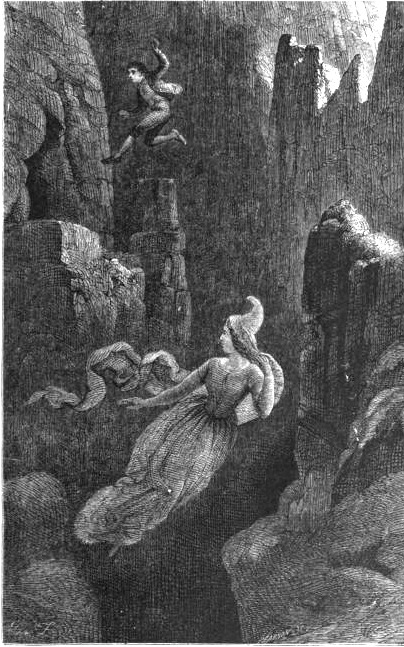
(Engraving of a man jumping after a female elf into a precipice.)
-> In traditional Norse Mythology, you have the Álfar. The Ljósálfar ("Light Elves") and the Dökkálfar ("Dark Elves") who are two contrasting types of elves; the dark elves dwell within the earth and have a dark complexion, while the light elves live in Álfheimr (Alfheim), and are "fairer than the sun to look at". They are both attested in the Prose Edda, written in the 13th century by Snorri Sturluson, and in the late Old Norse poem Hrafnagaldr Óðins.

(“Oberon, Titania and Puck with Fairies Dancing” illustration by William Blake, c. 1786)

(“Älvalek” or “Elf Play” although the museum lists it as “Dancing Fairies” - oil painting by August Malmström 1866)
-> In Irish folklore, The Tuatha Dé Danann (meaning "the folk of the goddess Danu") are also known by their earlier name Tuath Dé ("tribe of the gods"), because in some beliefs the Fae are depicted as Demoted Pagan Deities. They are described as a supernatural race, much like idealized humans, who are immune from ageing and sickness, and can wield magic. The powers most often attributed to the Tuath Dé are control over the weather and the elements, and the ability to shapeshift.

(The Tuatha Dé Danann as depicted in John Duncan's Riders of the Sidhe - 1911)
All in all, in folklore, faeries actually rarely have wings, but they are often depicted with them in Victorian and later artworks.

(A portrait of a fairy, by Sophie Gengembre Anderson - 1869. The title of the painting is Take the Fair Face of Woman, and Gently Suspending, With Butterflies, Flowers, and Jewels Attending, Thus Your Fairy is Made of Most Beautiful Things – from a verse by Charles Ede.)
What I've noticed is that, in the traditional sense, fairies often fly using magic, or by perching on the backs of birds, ragwort stems, or other mythological creatures like dragons or gryphons.
And some depictions are vague enough to attest a certain attribute (like wings) as a creative liberty to a faerie that, say 'lives in the sky'.
But does that mean the Fae in early folklore do not have wings at all?
Absolutely not.
Thus far, I've only listed depictions of the Fae that are most reminiscent of the 'traditional Elf'. But have you ever heard of Leprechauns... Banshees... Changelings...Pixies... Mermaids...
Sprites, Goblins, Gnomes?
The freaking Headless Horseman?
Because they're all also Fae.
There are also faerie animals. Heard of Kelpies, anyone?
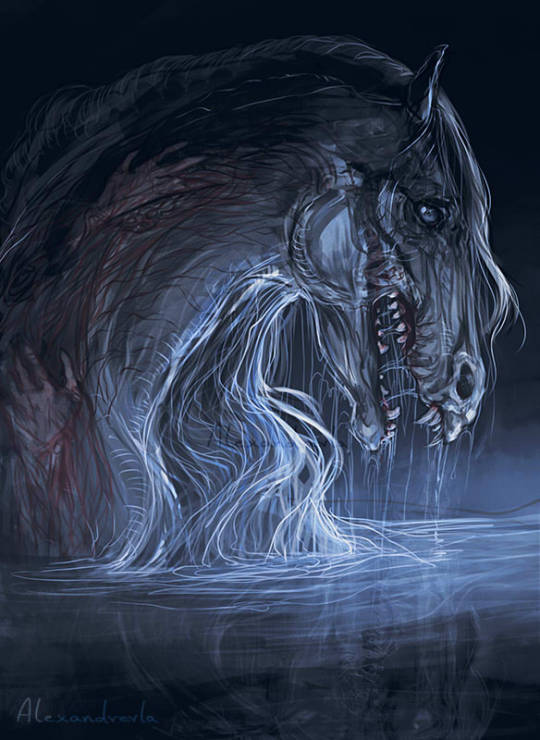
And quite frankly, it is not possible for me to summarize the scope, the depth and the richness of the cultures depicting these creatures with all of their variants. There are Eastern cultures, Western cultures, Indigenous cultures; I'm Bulgarian and my own culture has beliefs about faeries and Fae-like beings (the Slavs are a whole different ball game when it comes to that).
People dedicate their entire lives to become Folklorists and will still barely scratch the surface. All in all, there's just not one set of rules for the Fae, we can't amalgamize them into one thing, that's just not how it rolls.
So what can I say about my depiction of the Fae in Path of Alfheim?
Well... I have a ton of variety to play with. 😁
My understanding is that the Fae all vary from each other depending on their lineage, their upbringing, their alignment, the territories and/or 'realms' that they inhabit. There are so many species out there that every shape and form you can possibly think of likely exists.
And besides the faeries that live on land, there are also lake folk, sea folk, mountain folk, valley folk, air folk, a specific corner of the room at night folk.
They can be spirits, ghosts, animals, monsters, elementals, demons, demoted angels, deities, humanoid... It goes on.
Something that hugely inspired me, and what I think is a beautiful depiction of the Fae, happens to be the Disney Maleficent duology with Angelina Jolie as the main female lead. The production had Holly Black, a New York Times best-selling author of over thirty fantasy novels (The Cruel Prince being one of them) and a Faerie Folklorist, on set.
And, oh, would you look at that?

Maleficent has wings. 😉
So whether the FMC does as well is up to the interpretation.... for now.
Thank you for the Ask, Anon! ❤️
18 notes
·
View notes
Text

DISCLAIMER: I know this is not the best way to split up the world!! This is not an exact science. I chopped up the regions arbitrarily and am aware that many of them overlap. This is an armchair survey. Please don't overthink it - just vote on whatever feels right!
183 notes
·
View notes
Photo
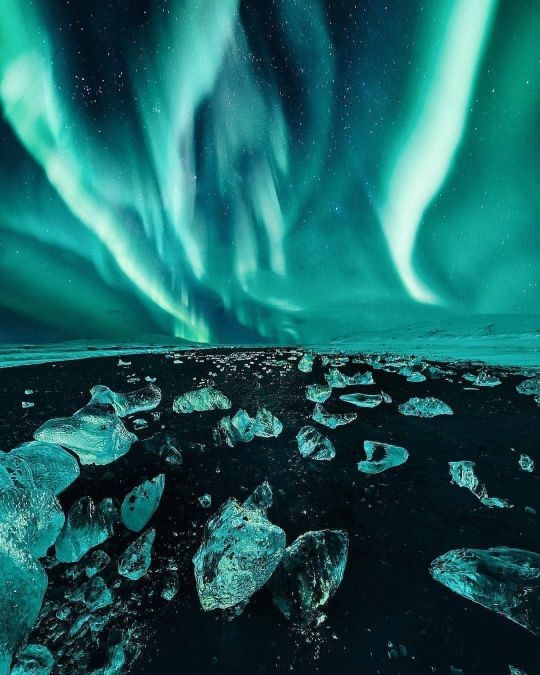
Ice under the aurora on Diamond Beach, Jökulsárlón, Eastern Region, Iceland.
Photographed by Kristina Makeeva Kotleta Timon
228 notes
·
View notes
Text
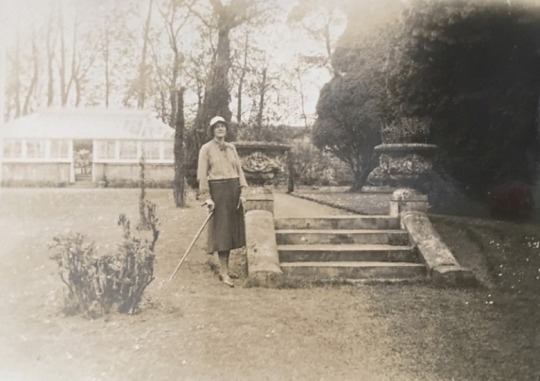

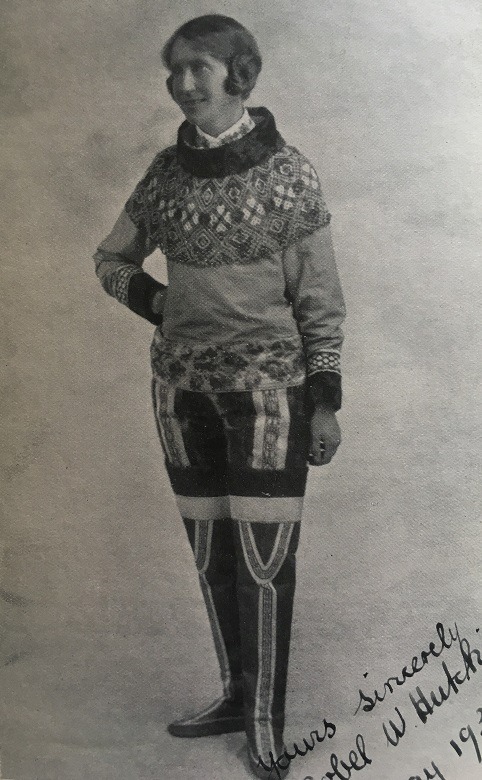
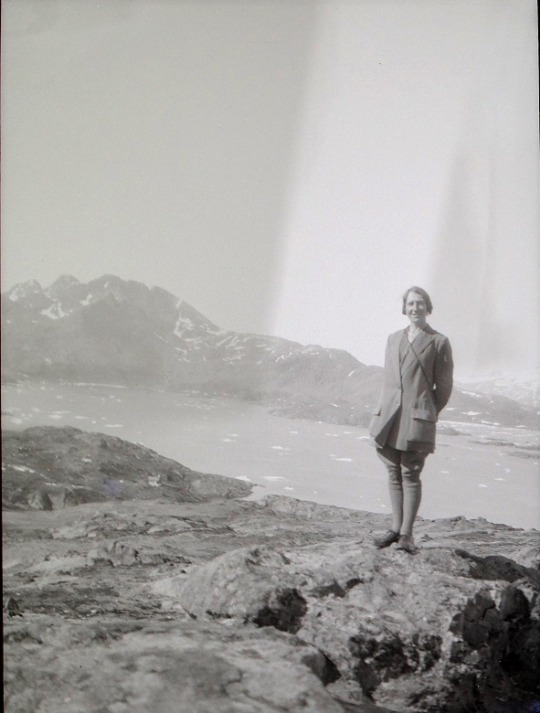
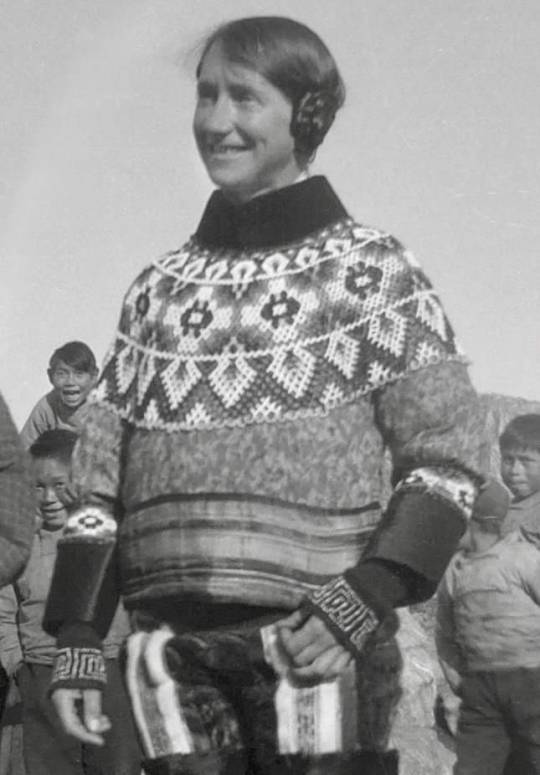
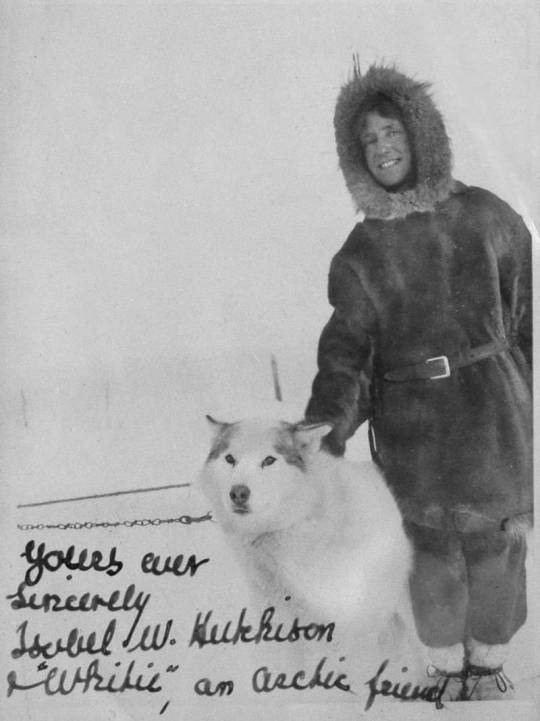

30th May 1889 saw the birth near Kirkliston of Isobel Wylie Hutchison.
This is a great tale of a remarkable strong willed woman bucking the trends and behaviour expected of a lady back in the mud 20th century.
Isobel Wylie Hutchison was an Arctic traveller during the 1920s and 1930s. She was also a botanist, a writer, a poet, an artist and speaker of numerous languages, so a bit of a polymath.
Carlowrie Castle a Scots baronial mansion was the comfortable upper-middle class home into which Isobel Wylie Hutchison was born in 1889. It was there her father, Thomas Hutchison, a successful wine merchant in Edinburgh, looked after his gardens, and passed on to Isobel his fascination for plants and his habit of meticulous note-taking. Although called a castle, Carlowrie was built between 1852 and 1855, so was never a defensive structure, but a luxurious home.
Isobel’s father, Thomas Hutchison, was a successful wine merchant in Edinburgh, he was a keen gardener and passed on to Isobel his fascination for plants and his habit of meticulous note-taking.
From 1917-18, she studied at an agricultural college, after which, she visited a number of countries around the Mediterranean region. But the sudden death or her father was subsequently followed by the loss of both her brothers. Isobel was left in a darkened place with a deeply grieving heart. Walking became her escape.
At a time when women were expected to stay at home, dressed in petticoats and tending to domestic duties, Isobel would often leave home for several days – much to the despair of her mother!
A Gaelic speaker, she had soon covered Scotland, including a trek from Blairgowrie to Fort Augustus, and began to look at bigger challenges. She wanted to spread her wings and fly away, and Iceland seemed like a good place to start.
Iceland, which she visited in 1925, was both a test and a revelation. She was told that she couldn’t walk the 260 miles north from Reykjavik to Akureyri because there were no maps, no guides, and it was far too dangerous. But she proved everyone wrong and then set her sights on another goal: Greenland.
By now, Isobel was making a name as a traveller in the Far North. She had written books about her experiences in both Iceland and Greenland. However, she hadn’t quite finished her Arctic adventures! She made arrangements to travel to Alaska and Northern Canada to explore and again, collect plant specimens. In May 1933, Isobel left Manchester and went by ship, riverboat, train and also plane, to reach Nome in Alaska.
Eventually, she arrived in Barrow, in the north of Alaska, where she transferred to another small vessel before the Arctic Ocean ice began closing in, making it impossible to travel any further. Isobel was forced to stay in a migrant Estonian’s hut for many weeks until the weather situation improved. Although her journey had come to a halt, it was an opportunity for her to visit local Inuit families, walk, travel by dog sled and stay in igloos. Eventually, she continued her Arctic trip with a 120-mile dog sled journey and crossed over into Canada. After many months in the Alaskan and Canadian Arctic she eventually returned to Scotland, having been away for around a year.
Unable to obtain permission from the Soviet authorities to visit Eastern Siberia, Isobel’s next northern journey was in 1936, to the Aleutian Islands, off the coast of Alaska. This thousand-mile long archipelago of both large and small volcanic islands draped like a gigantic necklace between Alaska and the Kamchatka Peninsula in the far east of the USSR. These islands were inhabited by Aleut people on treeless terrain and were exposed to continuous windy, foggy and stormy weather.
The Aleut people of the islands were able to live in such extreme conditions because they managed to catch a range of marine life. Fortunately, she was able to visit many of the inhabited islands by way of US government vessels. Invariably, landing on the islands involved negotiating heavy seas in wild conditions. However, when she did make land, she met with the local inhabitants, generally explored and was able to collect her plants.
The onset of World War Two curtailed any plans for further journeys into the Arctic. After the war, she completed a number of long treks, including walking from her home in Scotland to London, from Innsbruck to Venice, and from Edinburgh to John O’Groats. Isobel Wylie Hutchison passed-away at her home in Carlowrie Castle in 1982, aged 92.
The Arctic journeys of Isobel Wylie Hutchison were extraordinarily daring during a time when such trips were unheard of for a single woman. She developed a real passion for the North as she explored various regions of the Arctic world. Isobel was a true adventure traveller, enjoying the uncertainty of her journey, taking calculated risks, but being utterly intrigued by all she saw in the Far North.
17 notes
·
View notes
Text

Finland is world's happiest country for 7th year while US drops out of top 20 (France 24, March 20 2024)
"And Nordic countries kept their places among the 10 most cheerful, with Denmark, Iceland and Sweden trailing Finland.
Afghanistan, plagued by a humanitarian catastrophe since the Taliban regained control in 2020, stayed at the bottom of the 143 countries surveyed.
For the first time since the report was published more than a decade ago, the United States and Germany were not among the 20 happiest nations, coming in 23rd and 24th respectively.
In turn, Costa Rica and Kuwait entered the top 20 at 12 and 13.
The report noted the happiest countries no longer included any of the world's largest countries.
"In the top 10 countries only the Netherlands and Australia have populations over 15 million. In the whole of the top 20, only Canada and the UK have populations over 30 million."
The sharpest decline in happiness since 2006-10 was noted in Afghanistan, Lebanon and Jordan, while the Eastern European countries Serbia, Bulgaria and Latvia reported the biggest increases.
The happiness ranking is based on individuals' self-assessed evaluations of life satisfaction, as well as GDP per capita, social support, healthy life expectancy, freedom, generosity and corruption.
Jennifer De Paola, a happiness researcher at the University of Helsinki in Finland, told AFP that Finns' close connection to nature and healthy work-life balance were key contributors to their life satisfaction.
In addition, Finns may have a "more attainable understanding of what a successful life is", compared to for example the United States where success is often equated with financial gain, she said.
Finns' strong welfare society, trust in state authorities, low levels of corruption and free healthcare and education were also key.
"Finnish society is permeated by a sense of trust, freedom, and high level of autonomy," De Paola said.
This year's report also found that younger generations were happier than their older peers in most of the world's regions -- but not all.
In North America, Australia and New Zealand, happiness among groups under 30 has dropped dramatically since 2006-10, with older generations now happier than the young.
By contrast, in Central and Eastern Europe, happiness increased substantially at all ages during the same period, while in Western Europe people of all ages reported similar levels of happiness."
13 notes
·
View notes
Text

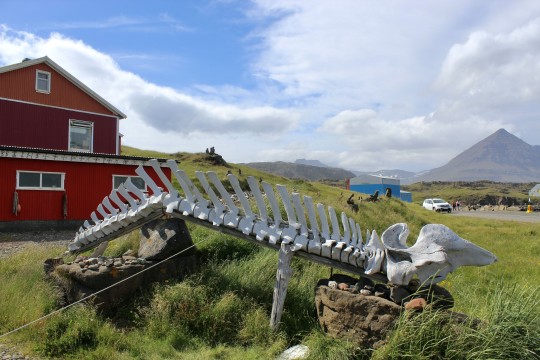


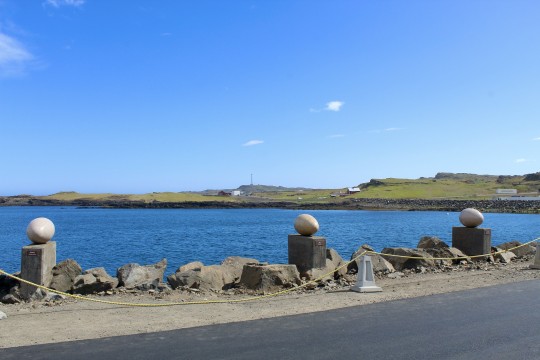
Iceland - Djúpivogur (2) (3) (4) (5) by Mike Fitzpatrick
Via Flickr:
(2) Whalebone gate guardian. (3) The pyramidal mountain Búlandstindur rises above Gleðivík, or Merry Bay in English. (4) (5) Gleðivík is best known for its artwork ‘the Eggs of Merry Bay’, or ‘Eggin í Gleðivík’. These are larger-than-life granite replicas of the eggs of the 34 species of bird that nest in the area. The eggs are all carved on the same scale in the actual shape of the specific egg represented and with a plaque identifying the species of bird the sculpture represents.
#landscape#wide sky#animal skeleton#coastal#rocky shore#sculpture#art installation#iceland#austurland#eastern region (iceland)#djúpivogur
5 notes
·
View notes
Text
List of countries that deserve no representation in the UN or to be recognised as subjects of international law, on the basis that they refuse to have a real name:
1. "South Africa" (that's a geographical expression)
2. "Georgia" (just call yourself Sakartvelo, idiot)
3. "The United States" and its contemptible colony "The United Kingdom" (self-explanatory)
4. "Congo" (most of the Congo Basin is located in the DRC, which is already called Congo, so it's easy to choose who should change its name).
5. "Central African Republic" (these are just adjectives that can apply to like, 10 different countries).
6. "East Timor" (it's a coward's move to name your country after part of an island. Ireland doesn't call itself South Ireland).
7. "Guinea" its "Bissau" and especially its "Equatorial" variants (those countries are completing some 60 years of independence and still use fake colonial names. It's like living in your parent's basement in your mid-30s)
8. "Iceland" ('hee hoo, Iceland is green and Greenland is icy' hasn't been funny or insightful for years)
9. "Ivory Coast" (Côte d'Ivoire isn't any less of a fake stupid name)
10. "Kiribati" (I feel ati if when you detide to utie the Latin Alphabet for your language you are respontible for not uting it in tiuch a way that the S tiound is repretiented by "ti")
11. "Israel" (self-explanatory)
12. "The Netherlands" (also a geographical expression but one that is evocative of the name for an evil region of a poorly constructed fantasy worldbuilding project).
13. "New Zealand" (Old Zealand had the decency to create its own real name).
14. "Niger" (the only part that deserves the name are the regions of Niamey, Tillabéri and Dosso, all the rest has nothing to do with it, plus Nigeria has more of the river - including the delta - and already took name).
15. "North Macedonia" (tell the Greeks to go to court if they're so upset about your name. Everyone knows copyright laws aren't respected in Eastern Europe anyway)
16. "Philippines" (Philip hasn't been your - foreign - head of state for over 400 years it's time to get over it)
17. "Sierra Leone" (we know you don't speak Italian. Stop it).
18. "South Sudan" (see, South Africa)
19. "United Arab Emirates" (come on now)
4 notes
·
View notes
Text
Hekla volcano, Iceland: Hekla stands 4,892 feet above sea level 70 miles east of Reykjavík, the capital, at the eastern end of the island’s most extensive farming region... Hekla, or Hecla, is an active stratovolcano in the south of Iceland with a height of 1,491 m. Hekla is one of Iceland's most active volcanoes; over 20 eruptions have occurred in and around the volcano since the year 1210. Wikipedia
192 notes
·
View notes
Text
Pls vote & tell me in the comments where ur from!! I'm interested in my followers hihi
I'm from western europe❣️🇳🇱
19 notes
·
View notes
Text
Character Focus Blogs
If you are looking for blogs to follow that focus on a particular character or region this is the list!
@ama-the-weeb - Norway, Iceland, Denmark, Hongkong
@aphfroghat - Iceland, Hongkong, Norway
@astrophilic-soul - India, America, China, Russia
@bates--boy - Sealand
@betty-bourgeoisie - Iceland, America
@bitterpaskel - Iceland, Nordics
@cawe-sama Robul, Lietpol, Moldova Eastern Europe
@council-of-beetroot - Poland, Prussia, Lithuania, Eastern Europe
@darcymariaphoster Nordics
@germanyskrazythiccass - Germany
@hoasens Vietnam
@hws-lceland - Nordics, Baltics, Romano, Norway
@icelandsgirl - iceland
@irithnova - Mongolia
@jackaroo-06 Oceania
@j-ellyfish - Austria, Italy, Prussia, Western Europe
@kimetsunozushi69 Persia, Rome, India, China, Ancient Greece
@losnordiquitos - Sweden, Nordics
@madam-of-lithuania Canliet, Canada, Lithuania
@maplequeen94 Canada, Ukraine, CanUkr, NA Bros
@molossophone Baltics, Benelux, Micronations
@nordickies - Nordics
@sakotisssss - Eastern Europe
@sere-ness-ima - Poland, Central Europe
@serica-e Rome
@someone-you-do-not-know - Spamano,
Denmark
@starsmadeinheaven Spamano, Itabros, Spain, Greece, Mediterranean
@tianshiisdead - China
List will be updated frequently if you want to be added just put in tags approximately 3 to 4 characters/ or one to two ships/ or a specific region
Check out these character ask blogs too!
52 notes
·
View notes